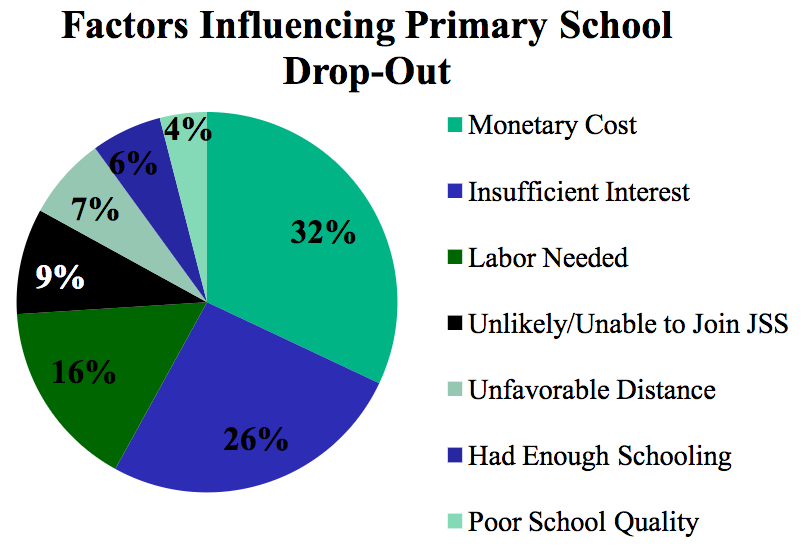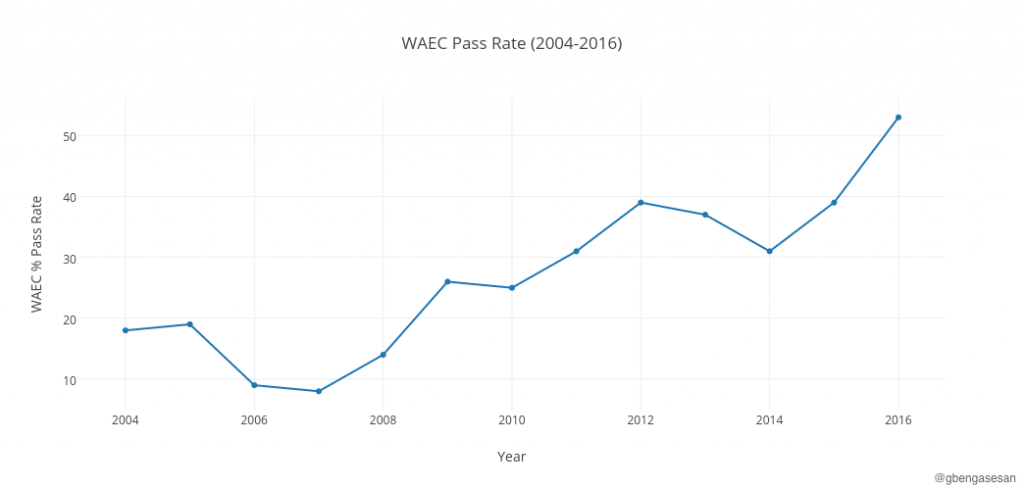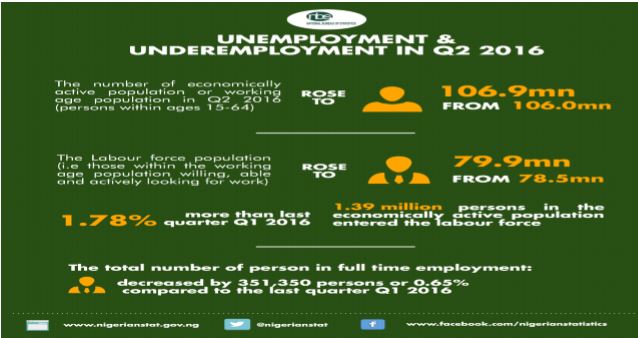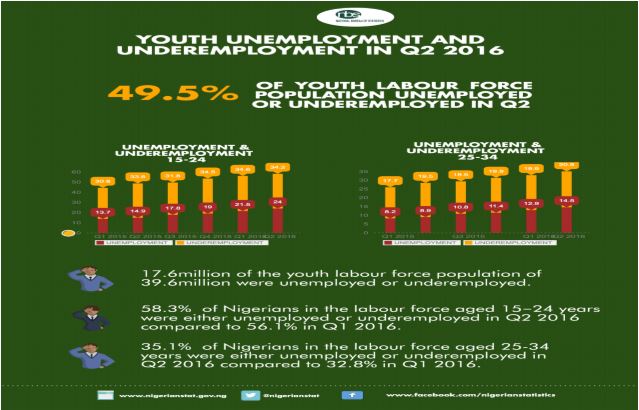First, it was Facebook. And now, it’s WhatsApp. You get added to a group, everyone welcomes you, you’re excited about hooking up with classmates… and then someone drops the bomb: we should go back to help the school, you know. Silence. In some cases, the silence is broken. In all cases, especially those groups set up for the tertiary institution you attended (in Nigeria), everyone agrees that things could have been better. Lecturers didn’t have to play so much God. Lectures could have used some more relevance. The story of how education is increasingly disconnected from the workplace says a lot about why unemployment and unemployability are both on the high side right now — and until we fix today’s student experience, the fate of tomorrow’s economy is pretty certain. At Paradigm Initiative Nigeria, we work to fix this student experience, using ICTs, so that under-served youth can improve their chances — but a foundation of miseducation makes this work a bit more difficult.
In addition to the miseducation that happens within the four walls of many institutions, there is also a funnel effect that condemns many young people to impossible futures, and this takes its toll on the economy too because some education — especially of the flawed variety — adds to the damage of available (wo)manpower. Let me start with the most scary of them all: 30% of pupils drop out of primary school and only 54% transit to Junior Secondary Schools. I wish I made that up. I didn’t. That was UNICEF data before terrorism joined child labour, economic hardship and early marriage for girls to chase more kids, especially girls, out of school. An even more recent Fact Sheet suggests that less than one-third of Nigerian primary school students will proceed to secondary schools — and “the top two factors influencing primary school drop-out in Nigeria are Monetary cost (32%) and Insufficient interest (26%)”.
 Working with the more optimistic number, I should not need to suggest what the 46% who don’t make it into Junior Secondary School go on to do but what happens to the 54% that make it into secondary schools? We know, for a fact, that not all of the 54% make it to Senior Secondary School but let the data speak for the results and experience of our children who complete those 12 years of education. Let me call the West African Examination Council (WAEC) to the stand. The student pass rates for WAEC between 2004 and 2016 are shown below, and if you don’t see the funnel effect in action, then you scare me more than the data. A student is considered to have passed this Senior Secondary School examination if (s)he gets a minimum of credit passes in six (6) subjects, including compulsory Mathematics and English.
Working with the more optimistic number, I should not need to suggest what the 46% who don’t make it into Junior Secondary School go on to do but what happens to the 54% that make it into secondary schools? We know, for a fact, that not all of the 54% make it to Senior Secondary School but let the data speak for the results and experience of our children who complete those 12 years of education. Let me call the West African Examination Council (WAEC) to the stand. The student pass rates for WAEC between 2004 and 2016 are shown below, and if you don’t see the funnel effect in action, then you scare me more than the data. A student is considered to have passed this Senior Secondary School examination if (s)he gets a minimum of credit passes in six (6) subjects, including compulsory Mathematics and English.
2004: 18%
2005: 19%
2006: 9%
2007: 8%
2008: 14%
2009: 26%
2010: 25%
2011: 31%
2012: 39%
2013: 37%
2014: 31%
2015: 39%
2016: 53%
Whichever way you look at these numbers, we should be worried. Even if you work with the best result in years — the 2016 result — we still have some 47% (one of every two students) who are not qualified to proceed to the next stage in their education. If there were vocational education or informal options, the pressure wouldn’t be much, but tertiary institutions tell the next story: only about a third of the students who pass their Secondary School exit examinations and write tertiary institution examinations are able to get a seat in the many schools that dot the Nigerian landscape. But that would be if they all pass, right?
 According to the Nigerian Universities Commission, we have 40 federal, 42 state and 61 private Universities in Nigeria while the National Board for Technical Education says there are 25 federal, 40 state and 38 private Polytechnics; 17 federal and 19 state Colleges of Agriculture; 23 federal, 2 state and 2 private Monotechnics; 9 federal, 40 state and 3 private Colleges of Health Technology; 19 federal, 110 state and 3 private Technical Colleges; and 22 federal, 47 state and 14 private Colleges of Education. Between them, these 576 institutions have a carrying capacity of about 800,000 (up from 450,000 in 2011, 500,000 in 2012 and 520,000 in 2013), which means only 800,000 of the 1.47M students who wrote the Unified Tertiary Matriculation Examination (UTME) in 2015 had a chance at tertiary education. When you consider the fact that most of them don’t bother applying outside universities and polytechnics, you can see the pressure on the funnel better.
According to the Nigerian Universities Commission, we have 40 federal, 42 state and 61 private Universities in Nigeria while the National Board for Technical Education says there are 25 federal, 40 state and 38 private Polytechnics; 17 federal and 19 state Colleges of Agriculture; 23 federal, 2 state and 2 private Monotechnics; 9 federal, 40 state and 3 private Colleges of Health Technology; 19 federal, 110 state and 3 private Technical Colleges; and 22 federal, 47 state and 14 private Colleges of Education. Between them, these 576 institutions have a carrying capacity of about 800,000 (up from 450,000 in 2011, 500,000 in 2012 and 520,000 in 2013), which means only 800,000 of the 1.47M students who wrote the Unified Tertiary Matriculation Examination (UTME) in 2015 had a chance at tertiary education. When you consider the fact that most of them don’t bother applying outside universities and polytechnics, you can see the pressure on the funnel better.
By the way, there were 1,493,611 UTME applicants in 2011; 1,503,933 in 2012; and 1,735,729 in 2013. That means only 30% of students who wrote the UTME in 2011 could get a place in our tertiary institutions. That number was 33% for 2012 and 30% for 2013. It grew to 54% in 2015 but that’s still 1 of every 2 students locked out. In summary, only 1 in 2 kids move from primary to secondary school and only 1 of every 2 kids who make it into secondary school have a place in our tertiary institutions. Someone should ask: how about the Open University? Well, the unconventional National Open University, better known for unconventional students like Obasanjo, Awujale, Emir of Bauchi, etc, had 132,000 students as at 2013 even though it said it could potentially handle 1.5 million. Let’s add National Open University’s 77 study centres to the 800,000 spaces in tertiary institutions and we still have much less than 1 million in total capacity, for about 1.5 million students!
There’s the capacity problem. And the motivation problem (why bother with this trouble when you can become a militant or politician and earn way more than your brilliant friends, right?) And the quality problem. And the disconnect problem. Comparing apples and oranges has nothing on comparing curriculum with industry requirements. Beyond all these, there’s also the cram-pass-forget problem. And the dub-a-final-year-project problem. That’s how, among other economy-related reasons, why we ended up with 49.5% youth employment in Q2 2016. There we go again with 1 of every 2 employable youth getting a job. Look at the unemployment and underemployment numbers and fear God. the future.

 These problems can make you bury your head in the sand and thank your stars for an opportunity to send your child to a country where education matters but if they’ll return to — or you’ll live in — the country where 50% drop off at every stage, you’ll be building an island of sanity that will soon be flooded by the waters of insanity all around it. We must do education differently and tackle each stage with deliberate interventions that will change the current outcomes. I don’t know much about the elementary and secondary school stages but the work that Paradigm Initiative Nigeria is doing at the post-secondary level through our LIFE and TENT programs have demonstrated what’s possible. For the tertiary stage in particular, we work with a model that helps students start preparing for post-school life in Year 1 and graduate with more than just a resume. Through the TENT program, we help students build ICT skills and businesses — not just apps or what’s popular — so they can be workplace ready, as skilled employees or business(wo)men in their own right.
These problems can make you bury your head in the sand and thank your stars for an opportunity to send your child to a country where education matters but if they’ll return to — or you’ll live in — the country where 50% drop off at every stage, you’ll be building an island of sanity that will soon be flooded by the waters of insanity all around it. We must do education differently and tackle each stage with deliberate interventions that will change the current outcomes. I don’t know much about the elementary and secondary school stages but the work that Paradigm Initiative Nigeria is doing at the post-secondary level through our LIFE and TENT programs have demonstrated what’s possible. For the tertiary stage in particular, we work with a model that helps students start preparing for post-school life in Year 1 and graduate with more than just a resume. Through the TENT program, we help students build ICT skills and businesses — not just apps or what’s popular — so they can be workplace ready, as skilled employees or business(wo)men in their own right.
Of course, there are many other institutions out there creating dents — and they could all use more support — but nothing helps like a coordinated approach that combines policy, action and partnerships. We have a huge problem on our hands and must act now to slow down the disaster.
Op–ed pieces and contributions are the opinions of the writers only and do not represent the opinions of Y!/YNaija
Gbenga Sesan is the Executive Director of Paradigm Initiative Nigeria. He can be reached on Twitter @gbengasesan.
This article was first published HERE


Leave a reply